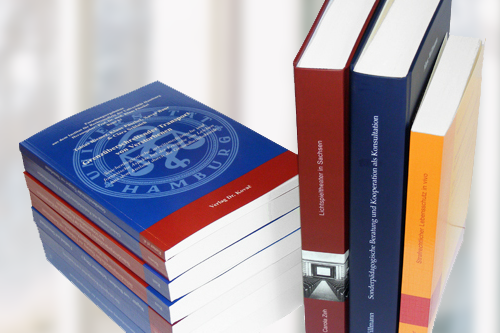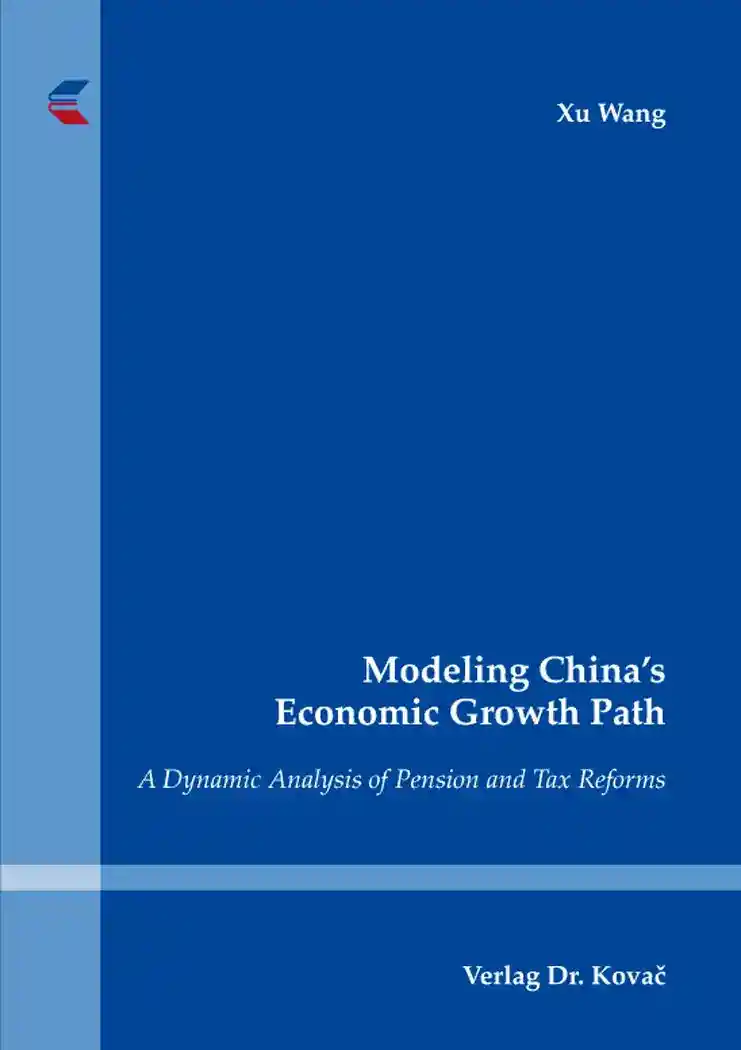Xu WangModeling China‘s Economic Growth Path
A Dynamic Analysis of Pension and Tax Reforms
– in englischer Sprache –
Studienreihe Volkswirtschaften der Welt, Band 30
Hamburg 2017, 250 Seiten
ISBN 978-3-8300-9689-4 (Print) |ISBN 978-3-339-09689-0 (eBook)
Zum Inhalt
The fast economic growth of China in the last three decades has impressed economists around the globe. How did China succeed to keep a high growth rate in such a long period? Which costs and risks could the rapid development of China imply? How could the historical success be maintained in the foreseeable future? A large number of economists and sociologists have been working on these themes for years. This is also the origin of this book. The book aims to develop a dynamic simulation model that is able to replicate not only China’s economic growth path but also its special saving pattern for the entire period of the economy reform launched in the late 1970s. The baseline model, which is a Computable General Equilibrium model with overlapping generations, assumes that two underlying transitions, namely the family structure conversion which has been taking place spontaneously since 1980 and the firm transition which was approved by the government and initiated by entrepreneurial households since 1992, account for China’s economic profile of high savings and sustainable growth.
In terms of the family structure conversion, the present model differentiates between altruistic and egoistic households and assumes that due to the economy reform the Chinese households gradually changed from the altruistic structure to the egoistic structure. The former refers to the family saving pattern where young agents financially support old agents and expect future transfers from their children, whereas the egoistic structure means that agents depend on own savings when they grow old. Since egoistic households build much higher savings than altruistic households, a transition from altruism to egoism itself explains the continuously increasing aggregate savings in the 1980s and helps explain the motion of savings during the 1990s and the 2000s to a great extent.
Following the study of Song, Storesletten and Zilibotti (2011) published in American Economic Review, heterogeneous state-owned and privately owned firms and the imperfect capital market were introduced into the model. Correspondingly, households are further differentiated into worker households and entrepreneur households who own private firms. Due to an imperfect capital market savings of entrepreneur households are the only source to finance private firms, which attain additional efficiency per labor unit compared to state-owned firms. A transition from an economy where only state-owned firms exist to an economy with a dominant fraction of private firms implies high savings, since entrepreneur households tend to save more than worker households. The study further developed the model of Song et al. (2011) by introducing the households’ decision on entrepreneurship.
In the baseline model, the family structure conversion from altruism to egoism along with the firm transition accounts for the entire development of the aggregate saving rate in China over the past three decades. Once the both transitions finish, the aggregate saving rate shall be steady and lower than the current high level. The family structure conversion is the underlying transition, which also affects the process of the firm transition and determines the overall level of aggregate savings.
Using the baseline model as a framework, alternative pension and tax reforms are simulated and analyzed regarding their distribution and efficiency effects. The essential results of these simulations are: i) transforming the current Pay-As-You-Go pension system to a fully funded system would lower the welfare level of current and future cohorts, while an enhancement of the current pension system would yield positive distribution and efficiency effects; and ii) making the income tax system more progressive would burden entrepreneur households and would be beneficial for worker households, generating overall positive distribution and efficiency effects.
Schlagworte
Allgemeines GleichgewichtsmodellAltruismAltruismusChinaComputable General EquilibriumEntrepreneurshipFinanzwissenschaftFiscal PolicyFiskalpolitikModell überlappender GenerationenOverlapping GenerationsPublic FinanceSaving RateSparquoteUnternehmertumVolkswirtschaftenIhr Werk im Verlag Dr. Kovač

Möchten Sie Ihre wissenschaftliche Arbeit publizieren? Erfahren Sie mehr über unsere günstigen Konditionen und unseren Service für Autorinnen und Autoren.
